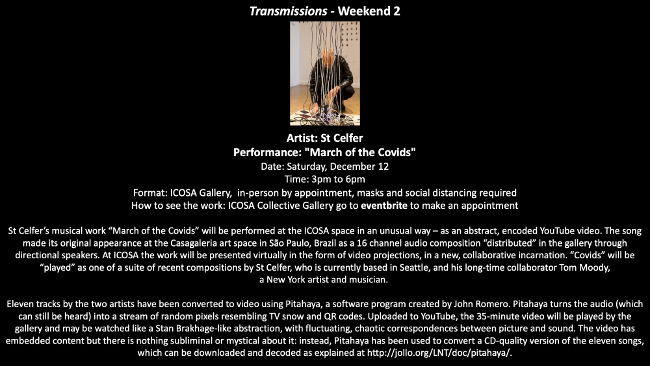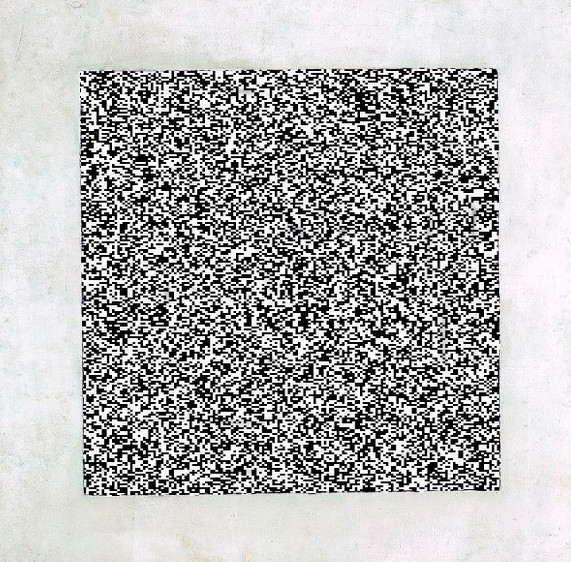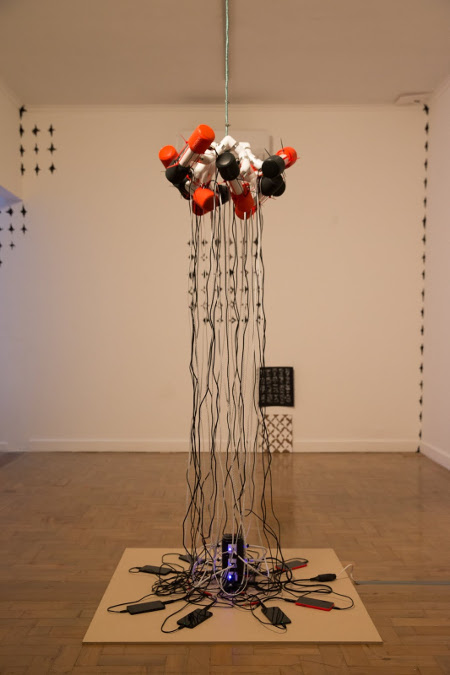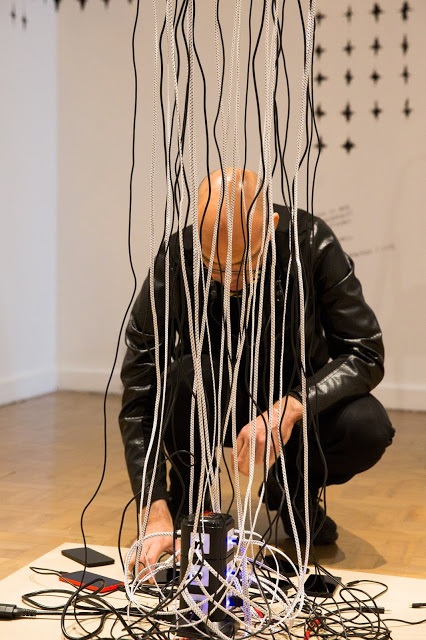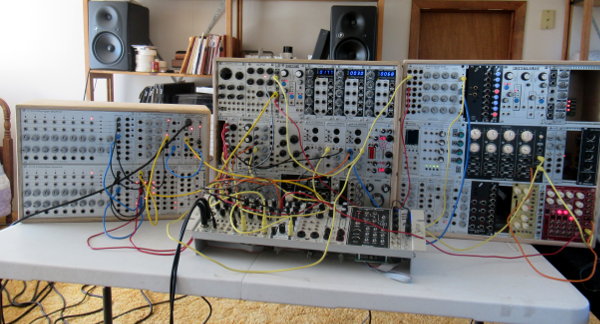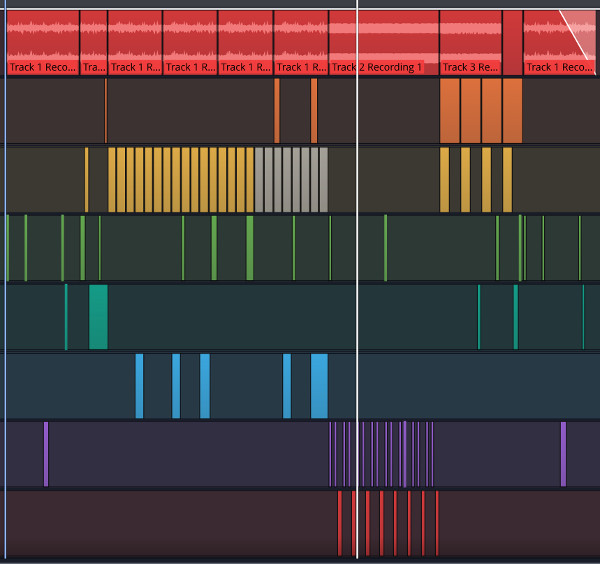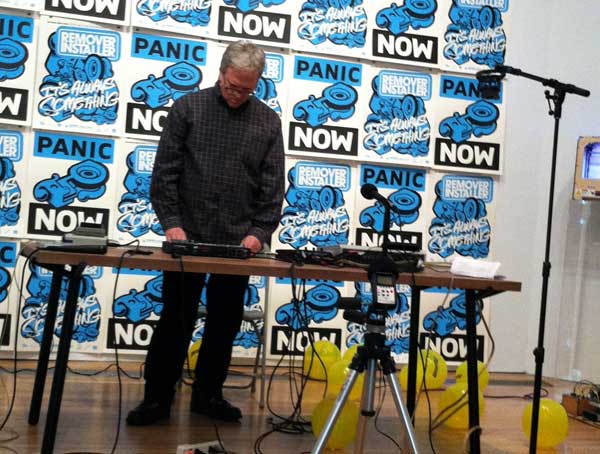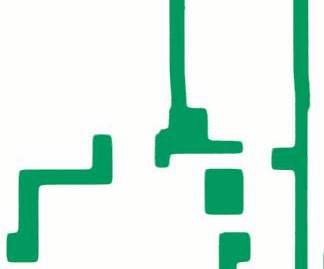In connection with our interview posted earlier this week, and our video/performance in Austin yesterday, St Celfer (aka John Parker) and I are pleased to announce the release of our new LP, "eleven tracks":
eleven tracks by St Celfer and Tom Moody
[Note: embedded players -- which I basically hate -- are replaced with links when they move off the blog front page]
The release is available for purchase as a CD, or as a download. Liner notes:
St Celfer and Tom Moody have been collaborating off and on since 2004. In this release "eleven tracks," each artist chooses several recent songs by the other and discusses them.
[You can] click or tap the individual songs to read commentary about them.
"On Breaking the Square," a 10-page dialogue between the two musicians about their work, philosophies, and "how they got where they got" in the past 16 years accompanies the digital version of this release as a bonus item (PDF).
Cover: Tom Moody, made with "Epson Print CD" and incorporating a detail from a video realization of his track "Melding Principle (Three Nebulaes)," employing John Romero's encoding/decoding program Pitahaya. See http://www.tommoody.us/archives/2020/11/18/melding-principle-three-nebulaes-bonus-pitahaya-release/

